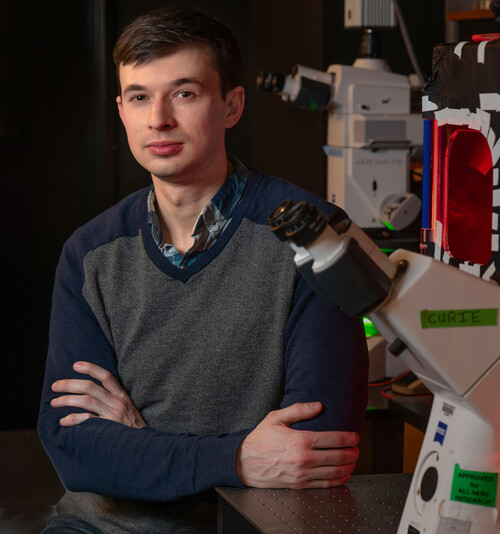James Valcourt

The adult body is made up of trillions of cells, and each type of cell is specially equipped for its role. “This diversity of cell types is produced during early development from a single progenitor,” says James Valcourt, a PhD candidate in systems, synthetic, and quantitative biology. “This one cell type makes a series of choices to become a certain type of cell, such as a skin cell, muscle cell, or neuron.”
“Imagine that a ball rolling down a hill that has two different valleys, where each valley represents a certain lineage of cell type. If it rolls into the first valley, it’s harder for it to change its mind and cross over to the other one, to an alternative fate,” says Valcourt. “I study that point of no return.”
By monitoring the expression of certain genes that are asymmetrically downregulated in the two alternative fates,Valcourt is able to observe the differentiation of stem cells in real time. “Previously, there was one way of controlling one particular decision cells make,” he says. “We’ve discovered there are independent knobs we can turn in order to control what a cell does. We can now tune separately how fast cells move through the tree of decisions, independent from their ability to change their minds. This enables us to predict and control the decisions cells make during early development.”
Valcourt’s findings tell us something fundamental about how cells make decisions that has potential applications in regenerative stem cell research. “If we give pluripotent stem cells the right instructions, we could theoretically turn them into pancreatic beta cells that could help treat Type 1 diabetes,” he says. His work also tells us something crucial about early human development by providing more ways of understanding how evolution might change the relative sizes of tissues.

